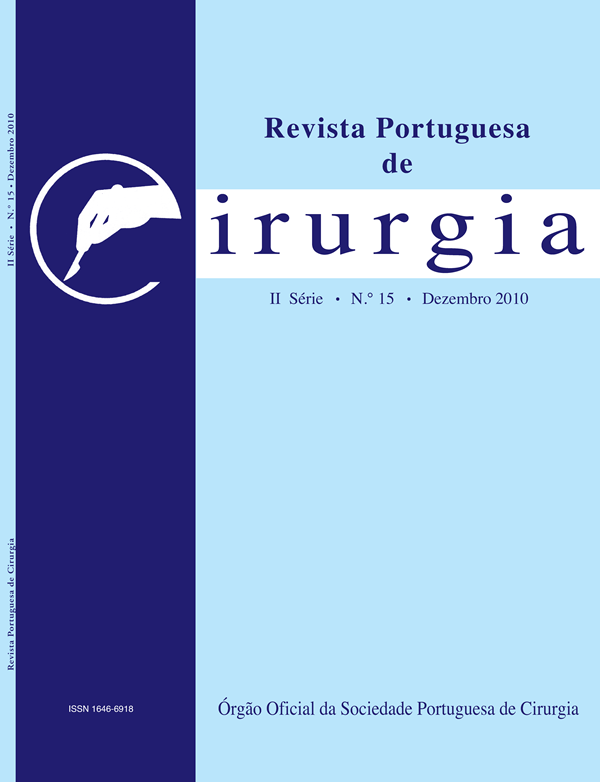Abdominal Wall Hernias. Organize to Improve
Abstract
The Ambulatory Surgery Unit of Santo António Hospital, by delegation of the Portuguese Society of Surgery’s Chapter of Abdo- minal Wall, undertook an appreciation of “state of the art” practice in what concerns surgical treatment of abdominal wall hernias in Portugal. This was carried out by the National Hospital Inquiry. All Portuguese Public Hospitals were asked to participate in the corresponding questionnaire, but the collection of data/information was only possible from 10 of these Healthcare Institutions, totalizing 12961 surgical procedures between 2001 and 2005.
Related questions, focused mainly on the type of hernia (inguinal, femoral, umbilical, epigastric and incisional); classification of surgery as primary or re-intervention, technique used, route of approach, antibiotic prophylaxis, morbidity rate and the associated recurrence.
As expected, the most common occurrence was the correction of inguinal hernias with 9320 surgeries, followed by the correction of umbilical hernias with 1542 surgeries. Techniques that include the use of prosthesis have a relevant role with average rates of 82.5%. Post-operative hematoma is the compilation with the highest number of notifications, while relapse rates show an average rate of 1.42%.
This study, revealed that nationwide the intended results are far off from the expected, although demonstrating that surgical interventions on the abdominal wall are common, yet revealing a growth in the tendency of synthetic meshes used during the procedure and indicating that morbidity rate should not be neglected. Although the registration of these occurrences are precarious in current hospital medical records, this may serve as the preliminary reference for a future National Register of Hernias, an instrument of analysis of this pathology in the Portuguese population, assessment of procedures and the consequent implementation of quality standardizations.
Keywords: Hernias; Abdominal Wall.
Downloads
Downloads
Published
Issue
Section
License
Para permitir ao editor a disseminação do trabalho do(s) autor(es) na sua máxima extensão, o(s) autor(es) deverá(ão) assinar uma Declaração de Cedência dos Direitos de Propriedade (Copyright). O acordo de transferência, (Transfer Agreement), transfere a propriedade do artigo do(s) autor(es) para a Sociedade Portuguesa de Cirurgia.
Se o artigo contiver extractos (incluindo ilustrações) de, ou for baseado no todo ou em parte em outros trabalhos com copyright (incluindo, para evitar dúvidas, material de fontes online ou de intranet), o(s) autor(es) tem(êm) de obter, dos proprietários dos respectivos copyrights, autorização escrita para reprodução desses extractos do(s) artigo(s) em todos os territórios e edições e em todos os meios de expressão e línguas. Todas os formulários de autorização devem ser fornecidos aos editores quando da entrega do artigo.



